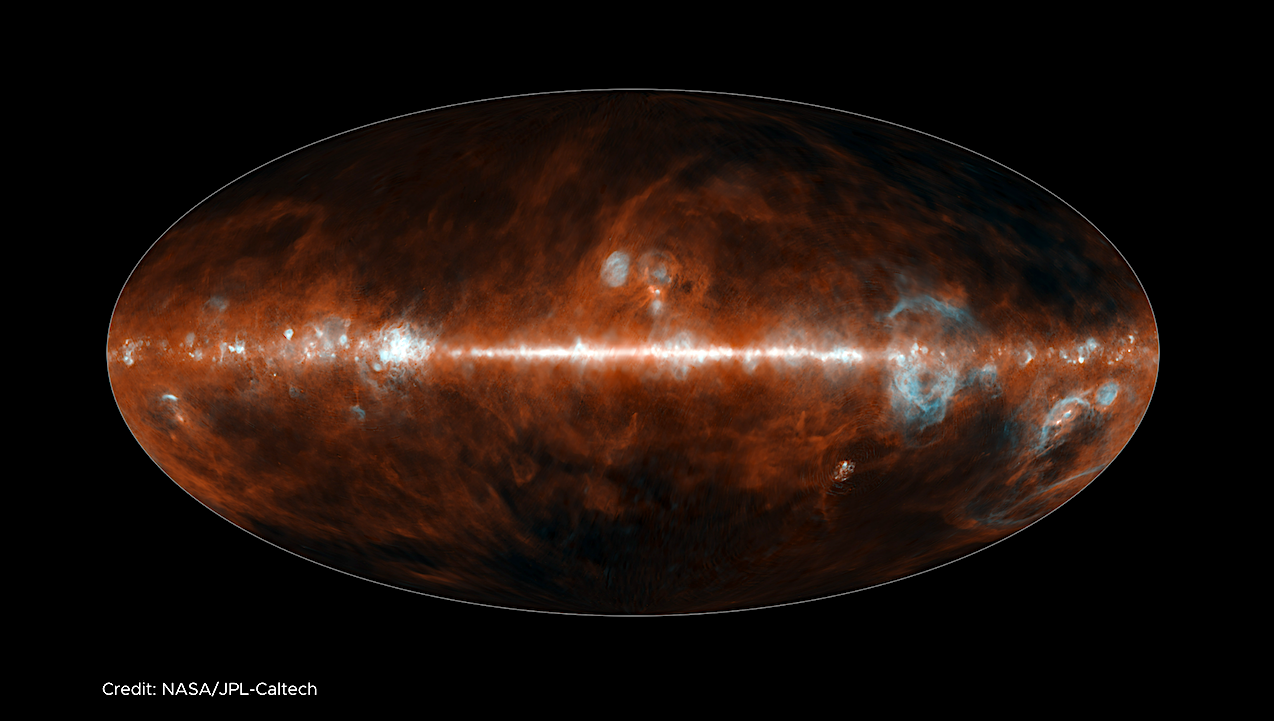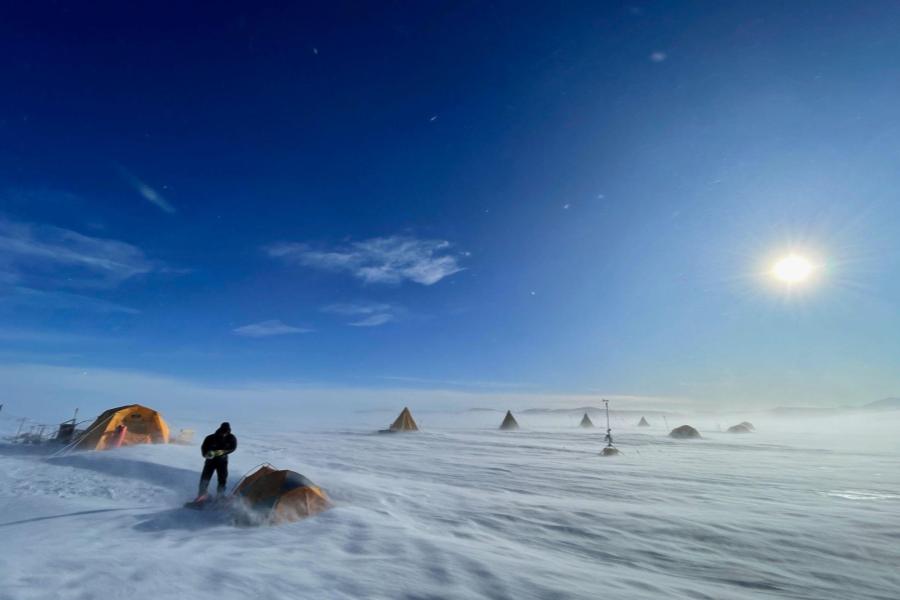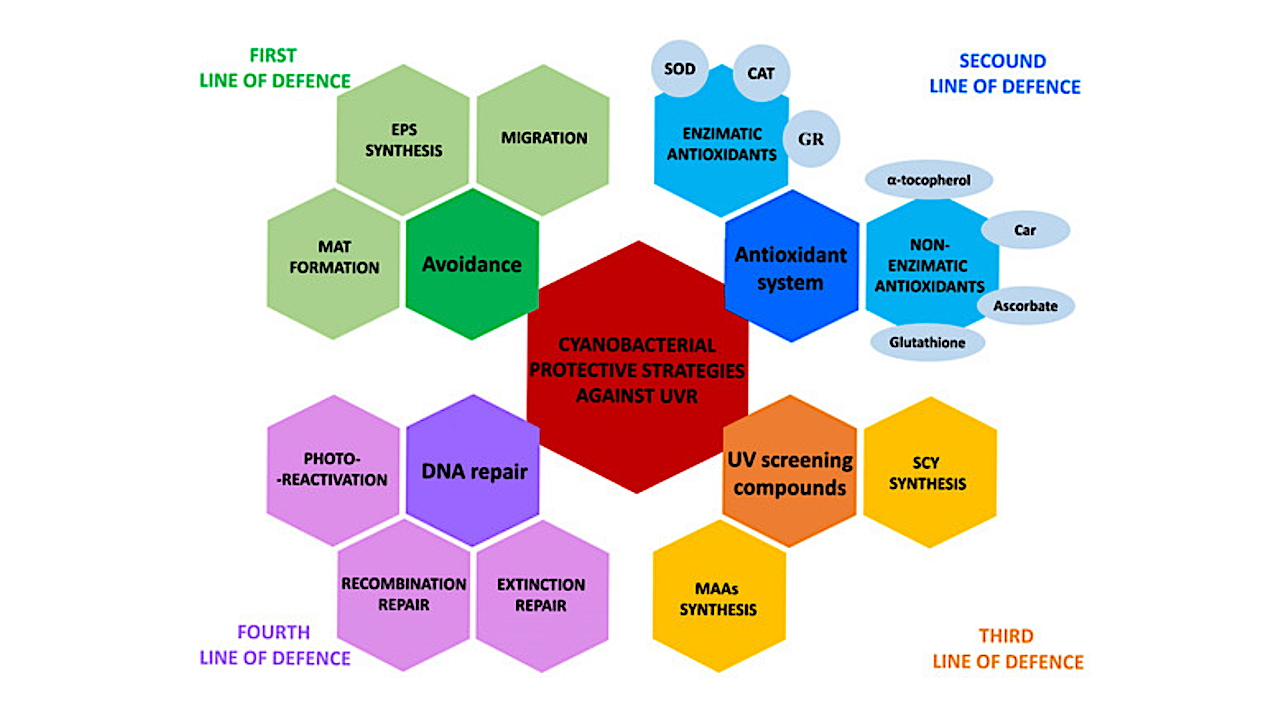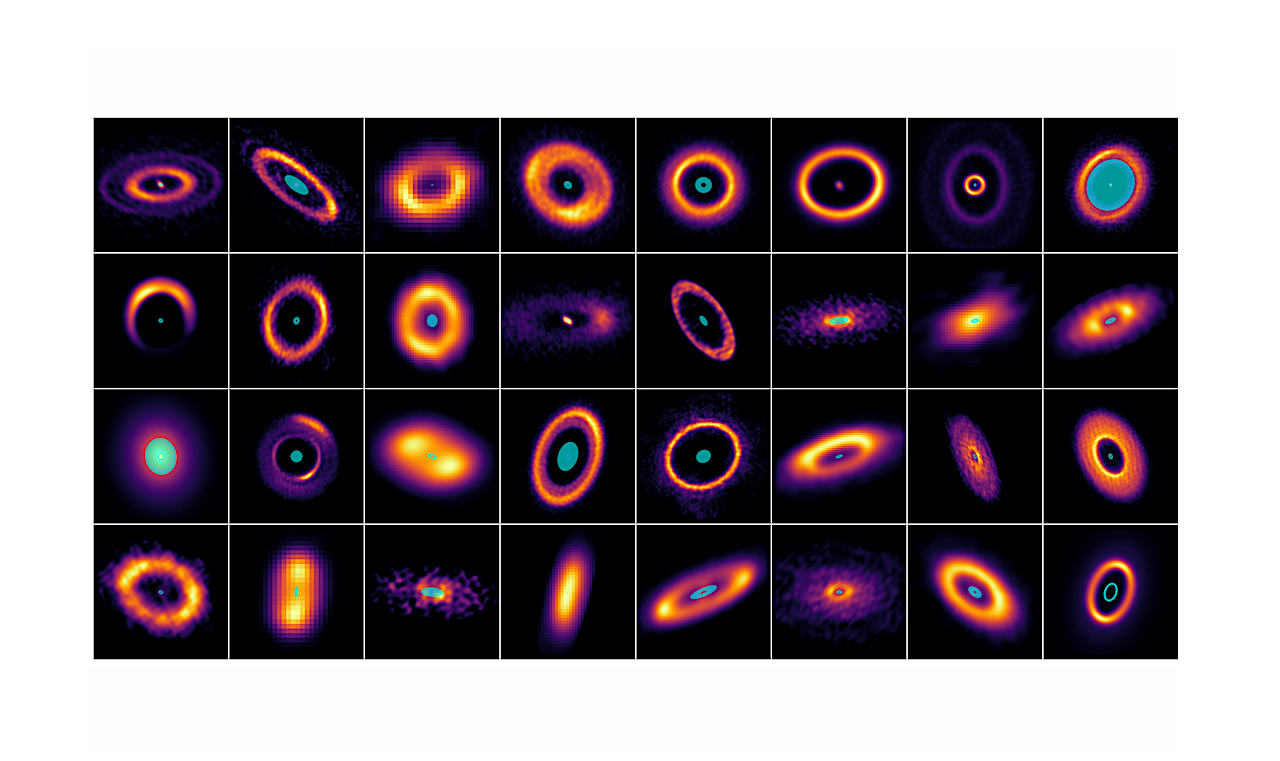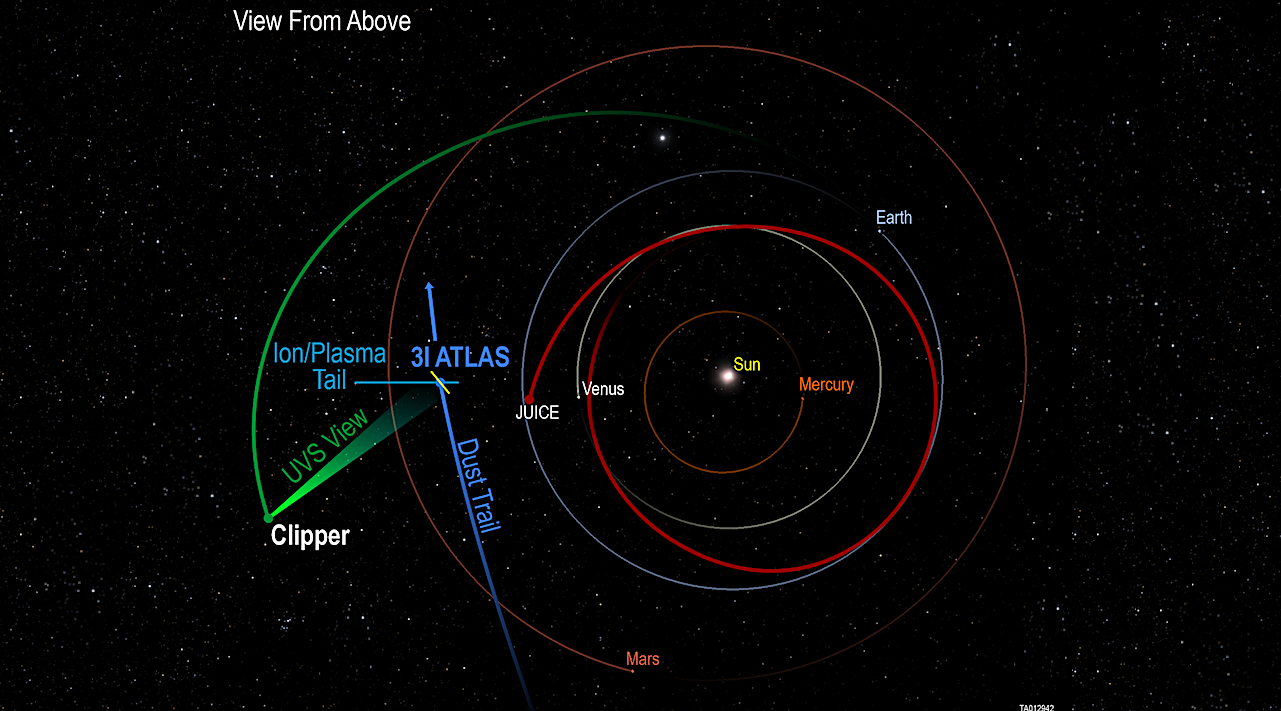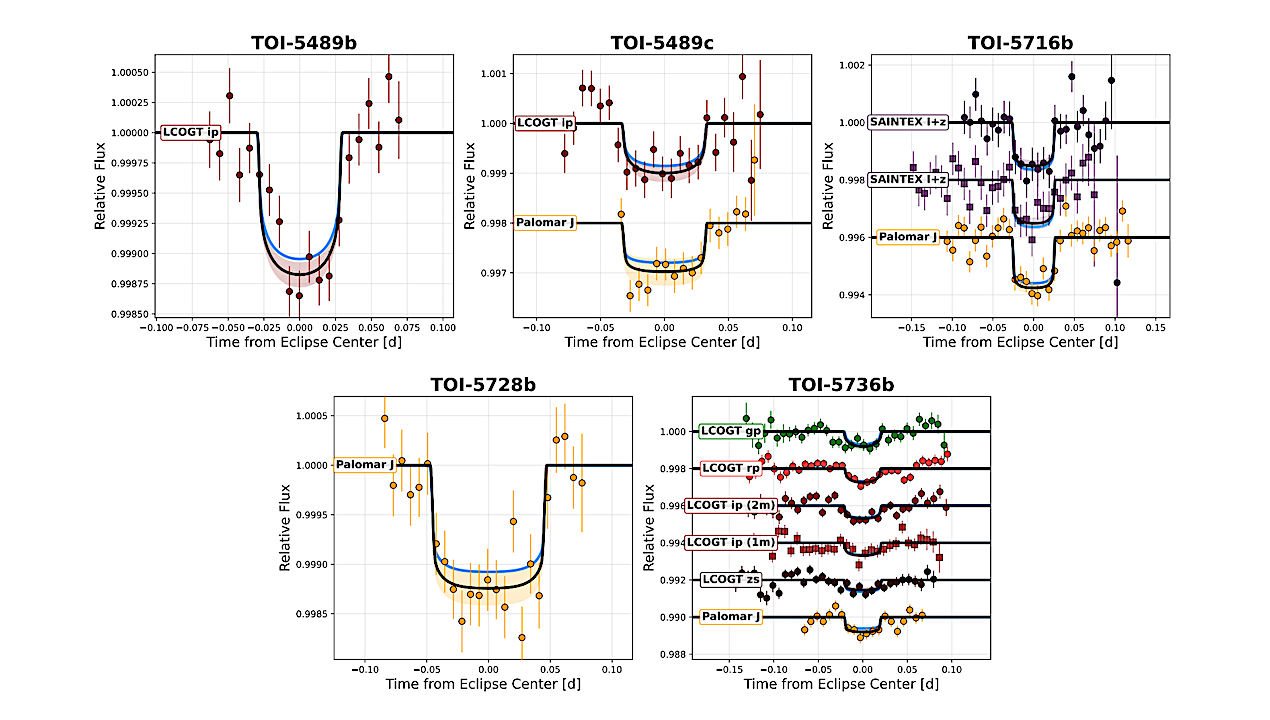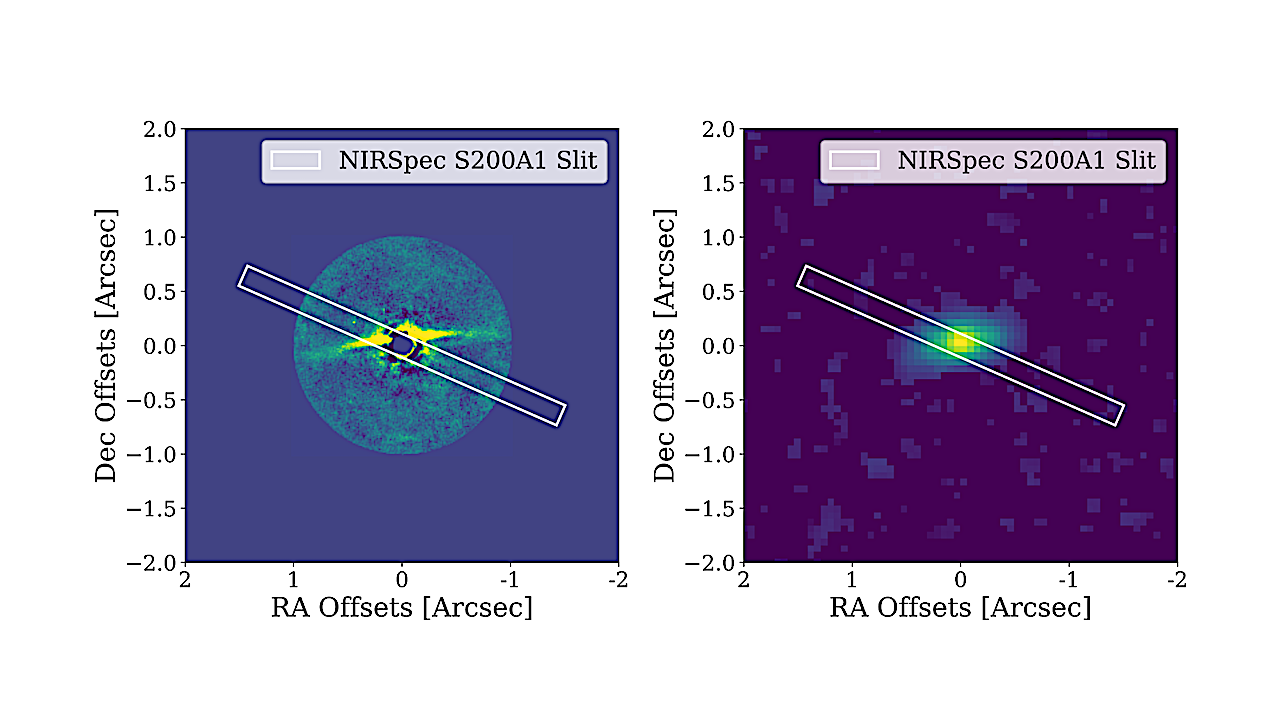This image features only the wavelengths emitted by the prominent red clouds of a type of cosmic dust known as polycyclic aromatic hydrocarbons (PAHs), and bubbles of hydrogen gas (blue).
Astrobiology
Several tents on the icy ground with a clear blue sky and shining sun. The NSF COLDEX camp during a storm in December 2022, Allan Hills, Antarctica. Photo Credit: Peter
The light curves from the NIRSpec G395H observations of TOI-1685, with the five visits shown chronologically from left to right. Top panel: raw, undetrended light curves at wavelength resolution
The lines of defence that cyanobacteria use against UVR. EPS—exopolysaccharides, CAT—catalase, SOD—superoxide dismutase, GR—glutathione reductase, Car—carotenoids, MAAs—mycosporine-like amino acids, and Scy—scytonemin. — International Journal of Molecular Sciences One of the
A collage of 32 glowing discs on a black background. Each disc shows concentric rings in vivid colours: purple, orange, and yellow, with bright cyan centres. The discs vary in
The Southwest Research Institute-led Ultraviolet Spectrograph (UVS) aboard NASA’s Europa Clipper spacecraft made valuable observations of the interstellar comet 3I/ATLAS during a period when it was difficult to observe from
Multi-color ground-based light curves for our five targets. Data points represent 10-minute binned photometry, with light curves obtained using identical filters and exposure times phase-folded together. Black curves show the
HD 131488 Disk and Slit Alignment, showcasing our data is sensitive to the disk region inward of 30 AU to the star. Left: The JWST NIRSpec Slit is overlaid on
NASA SMD – Research and Development of Initiatives of Advanced New Technologies (RADIANT) B.5 Research and Development of Initiatives of Advanced New Technologies (RADIANT) seeks innovative adaptations and applications of
For decades, science fiction writers have tried their best to prepare us for eventual contact with aliens. Their efforts are dominated by several recurrent tropes. There’s the invasion by a
-
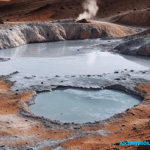 01From Polymerization-Enabled Folding and Assembly to Chemical Evolution: Key Processes for Emergence of Functional Polymers in the Origin of Life
01From Polymerization-Enabled Folding and Assembly to Chemical Evolution: Key Processes for Emergence of Functional Polymers in the Origin of Life -
 02Panasonic Leica Summilux DG 15mm f/1.7 ASPH review
02Panasonic Leica Summilux DG 15mm f/1.7 ASPH review -
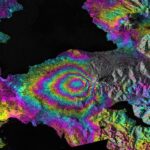 03How New NASA, India Earth Satellite NISAR Will See Earth
03How New NASA, India Earth Satellite NISAR Will See Earth -
 04And Thus Begins A New Year For Life On Earth
04And Thus Begins A New Year For Life On Earth -
 05Astronomy Activation Ambassadors: A New Era
05Astronomy Activation Ambassadors: A New Era -
06SpaceX launch surge helps set new global launch record in 2024
-
 07Two Black Holes Observed Circling Each Other for the First Time
07Two Black Holes Observed Circling Each Other for the First Time


